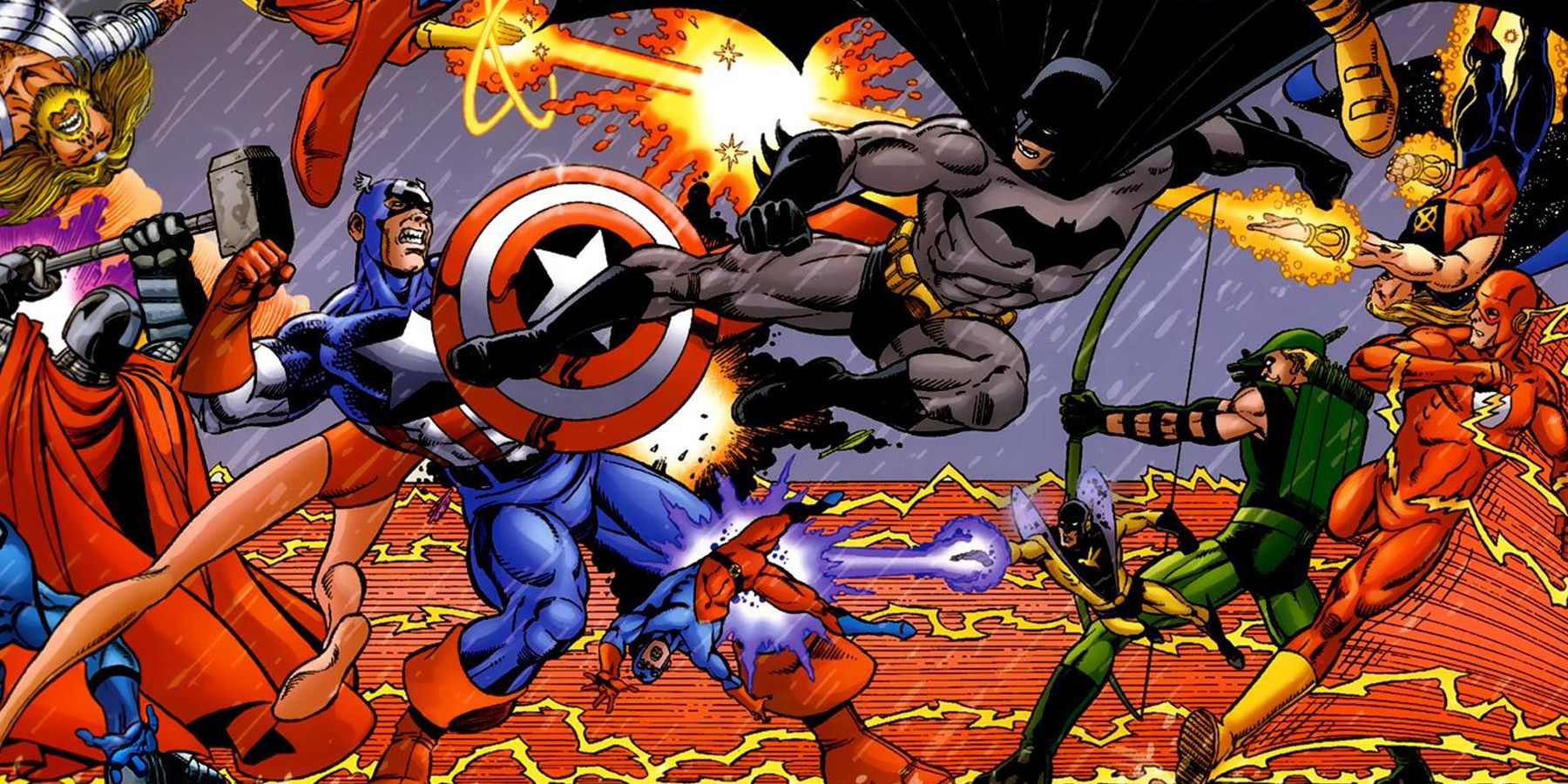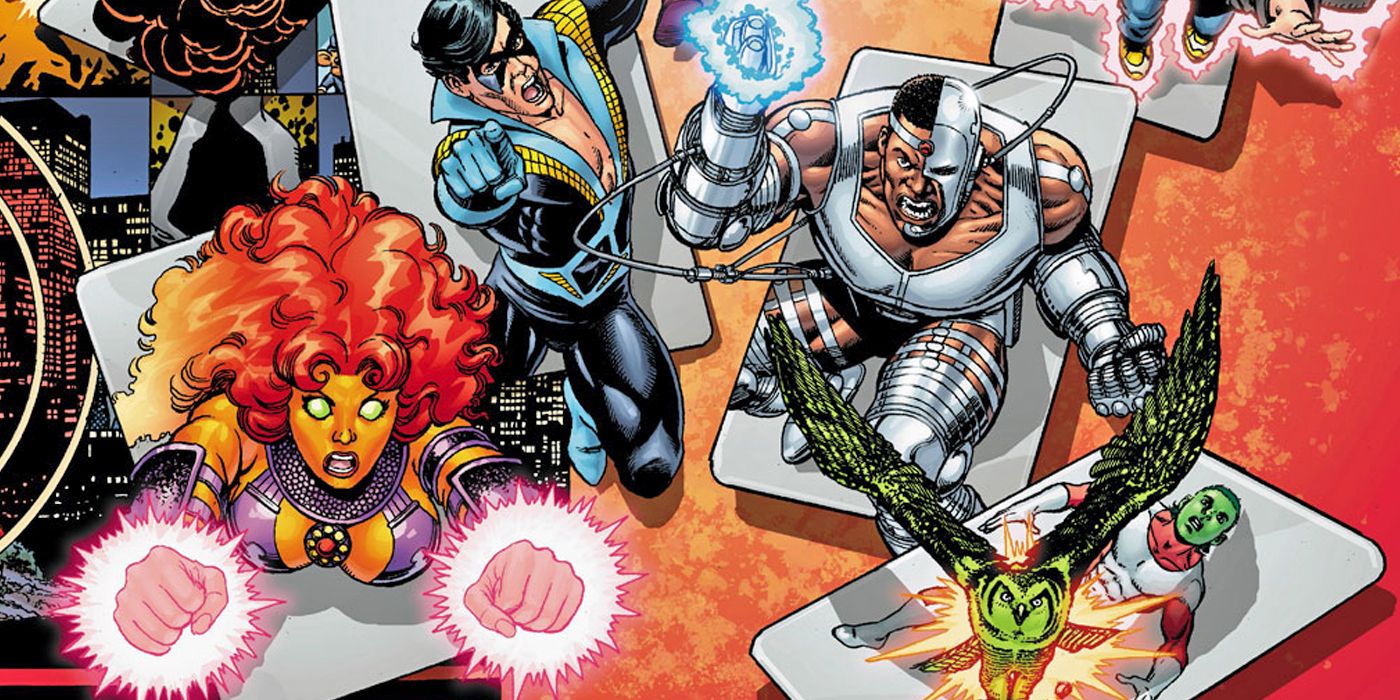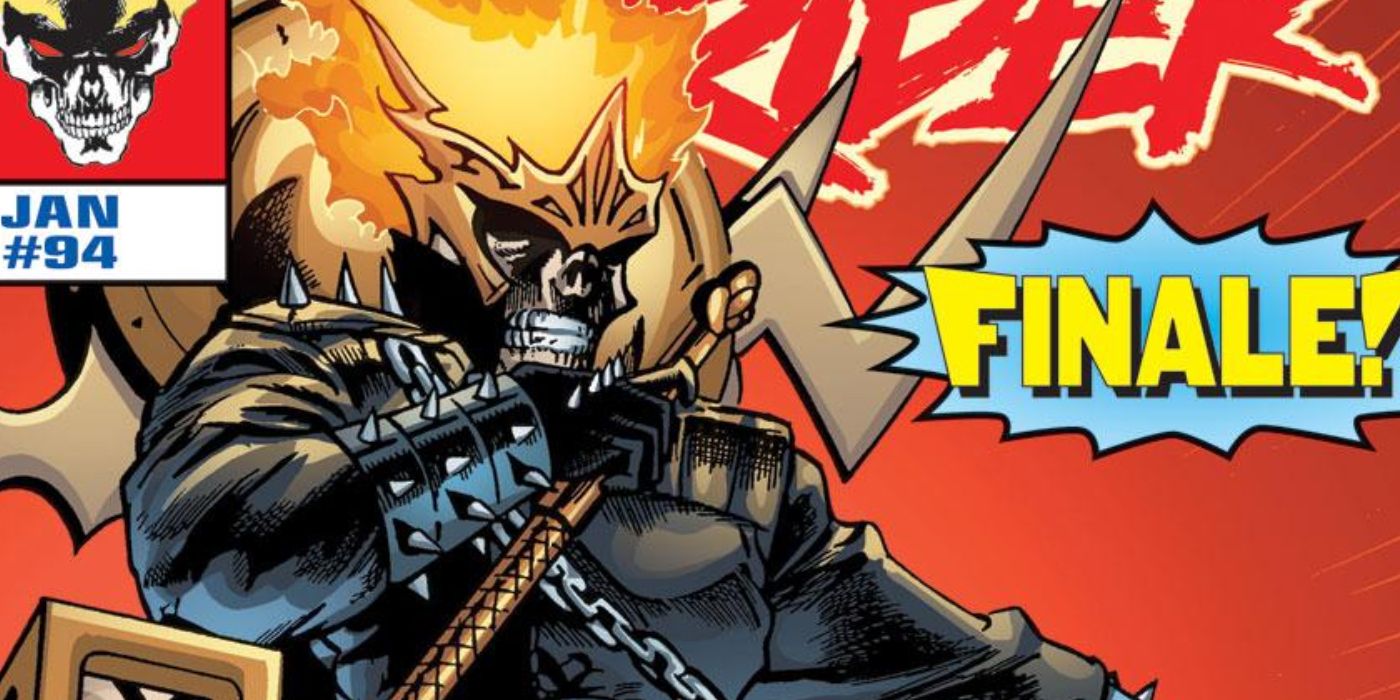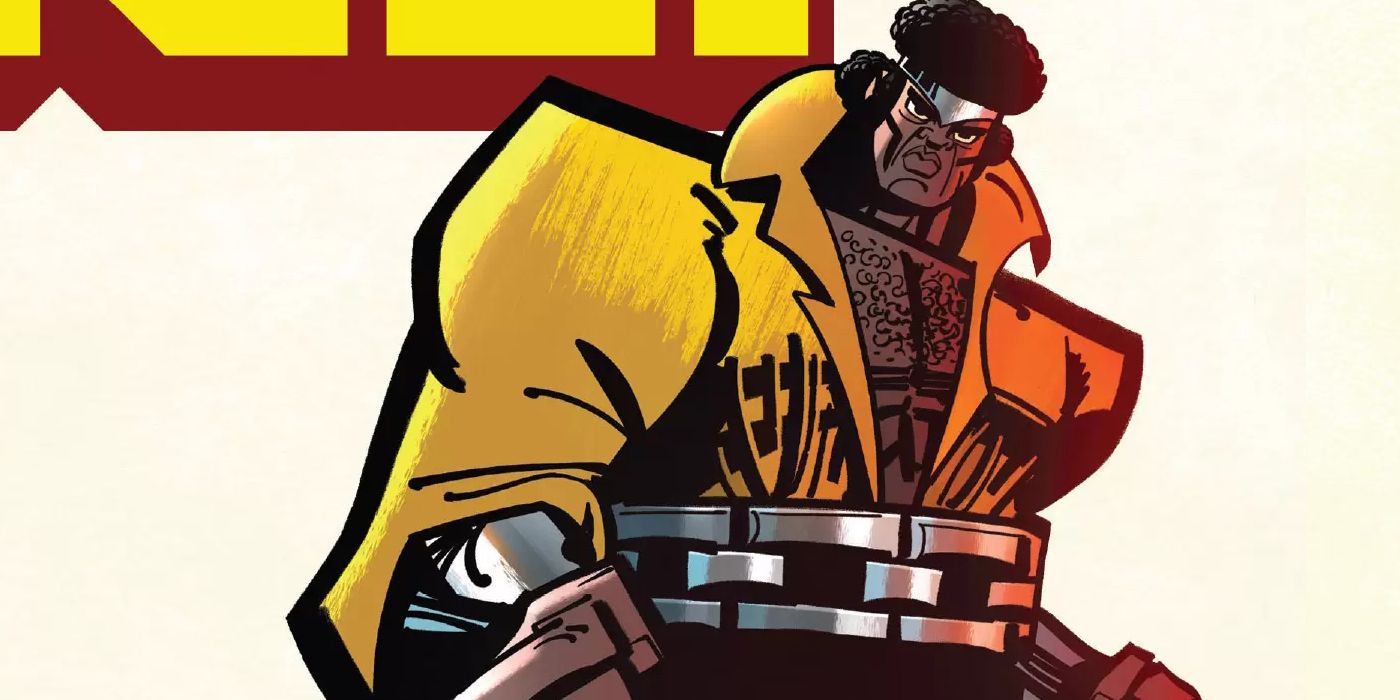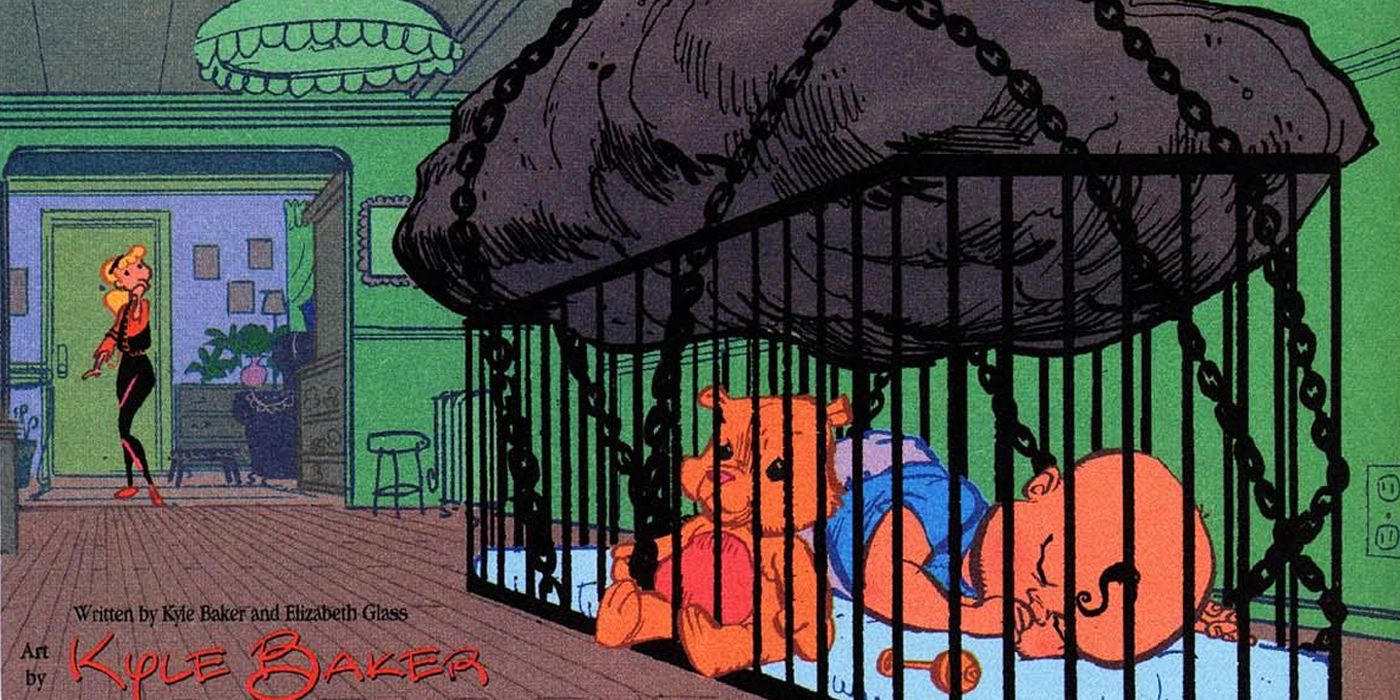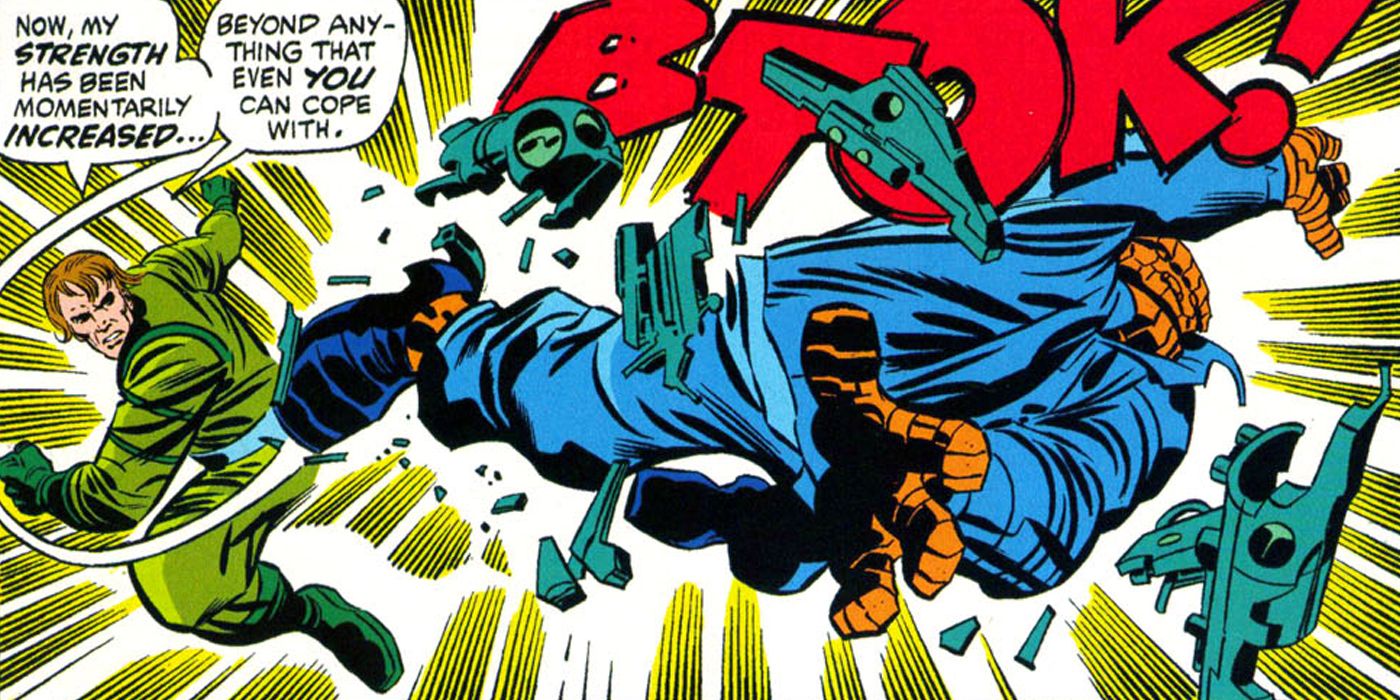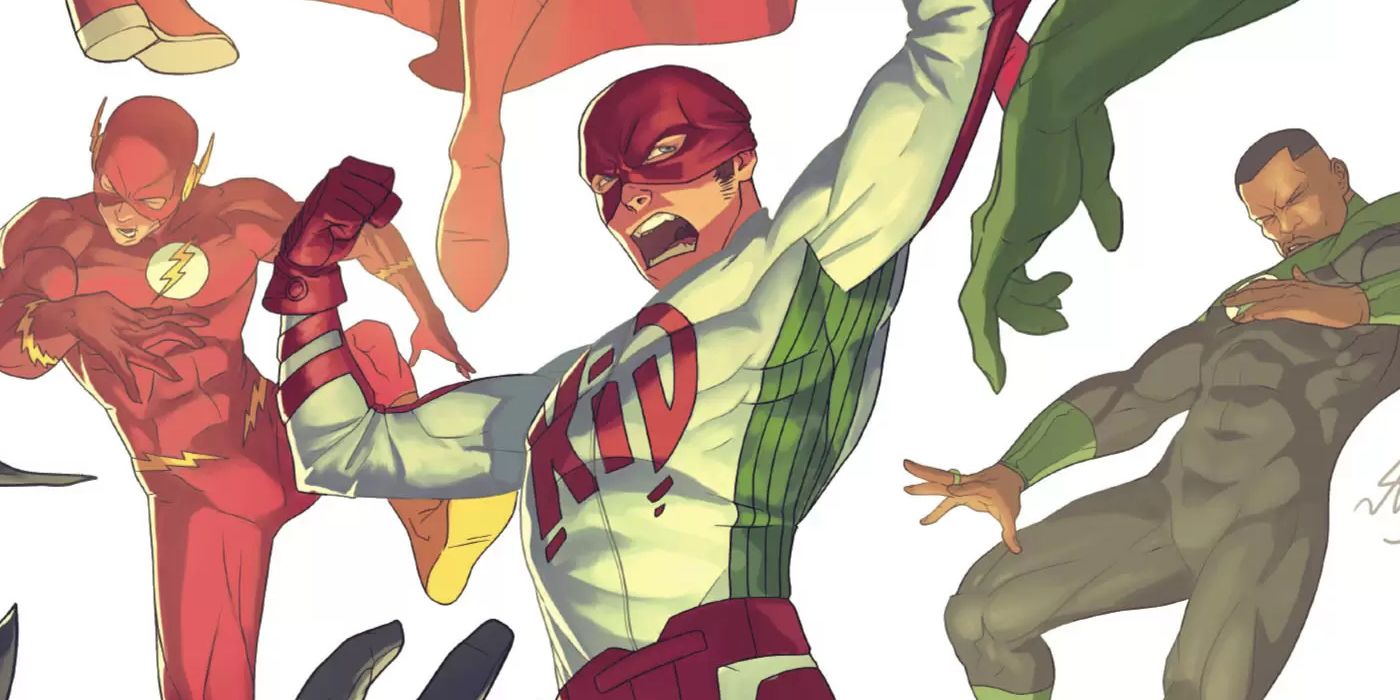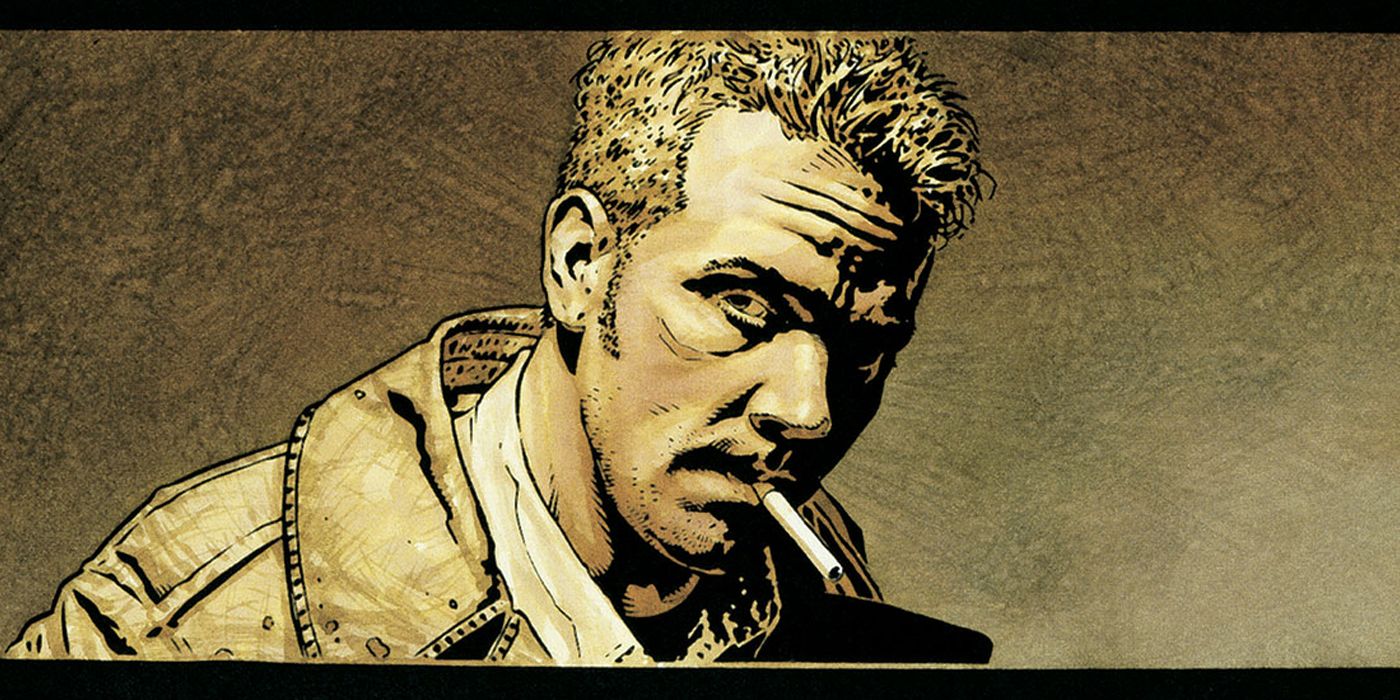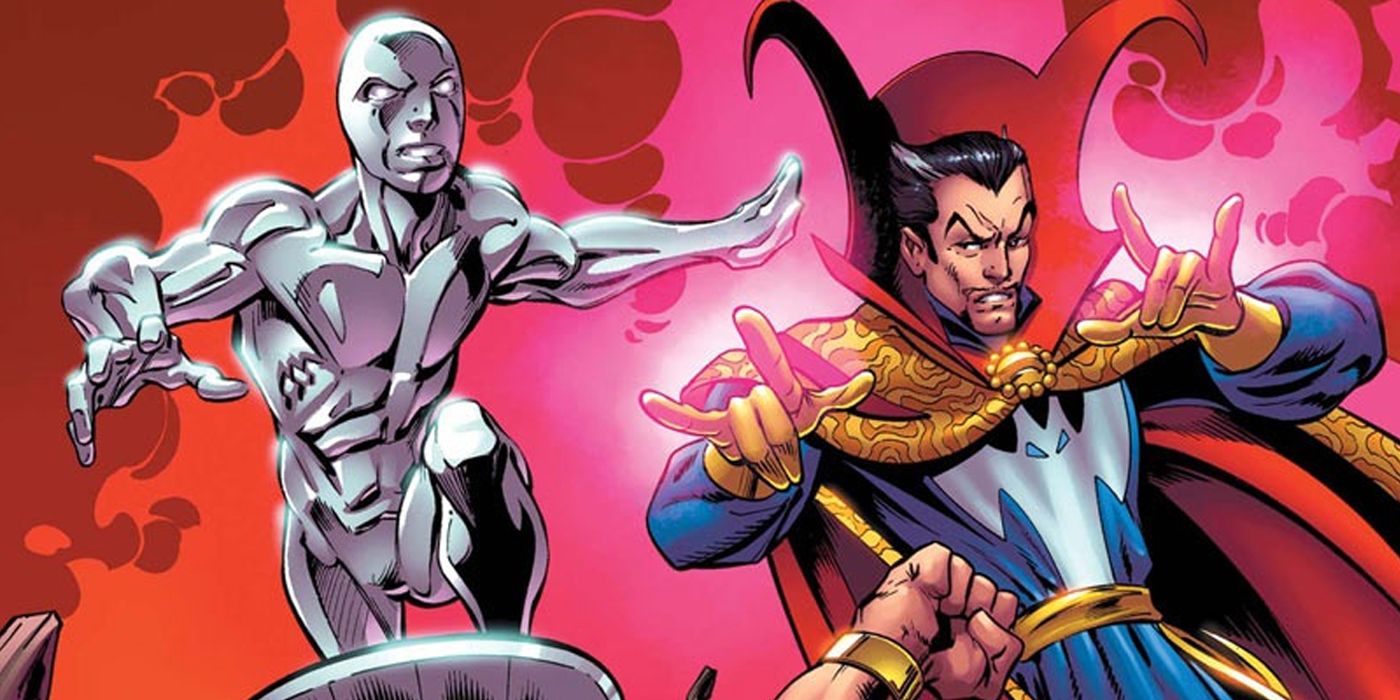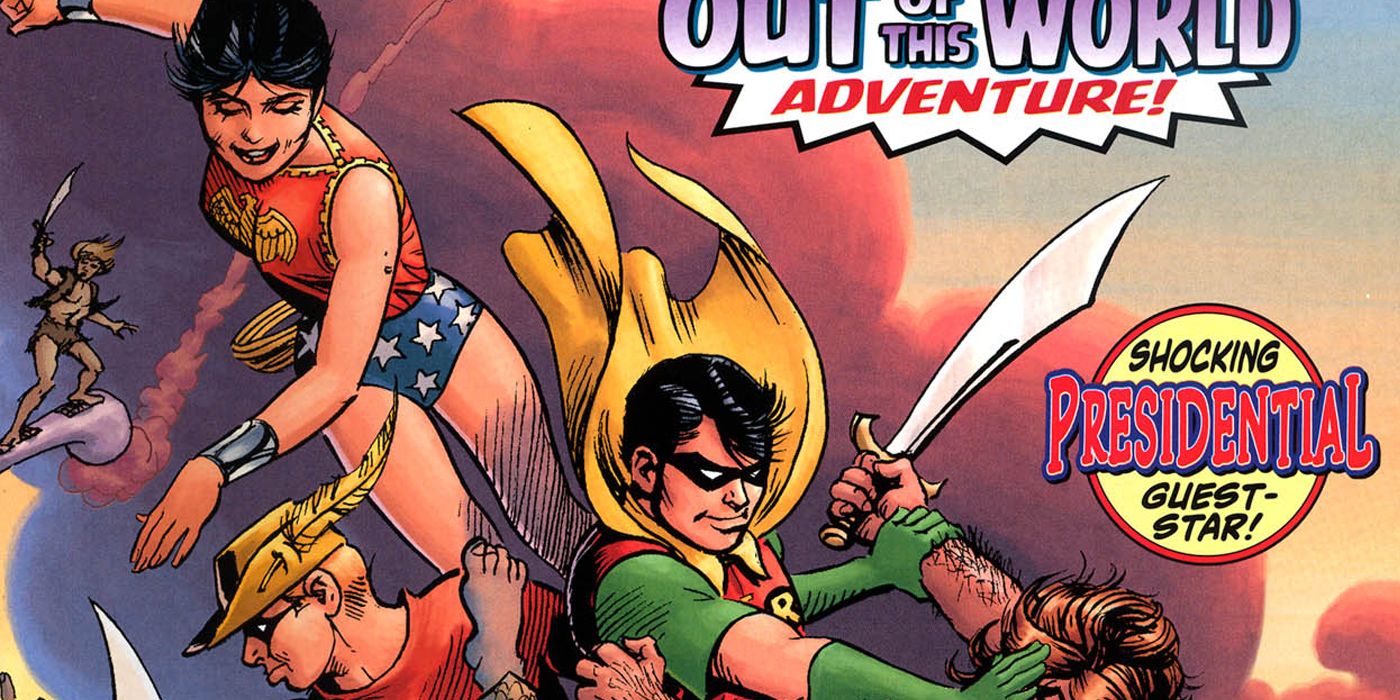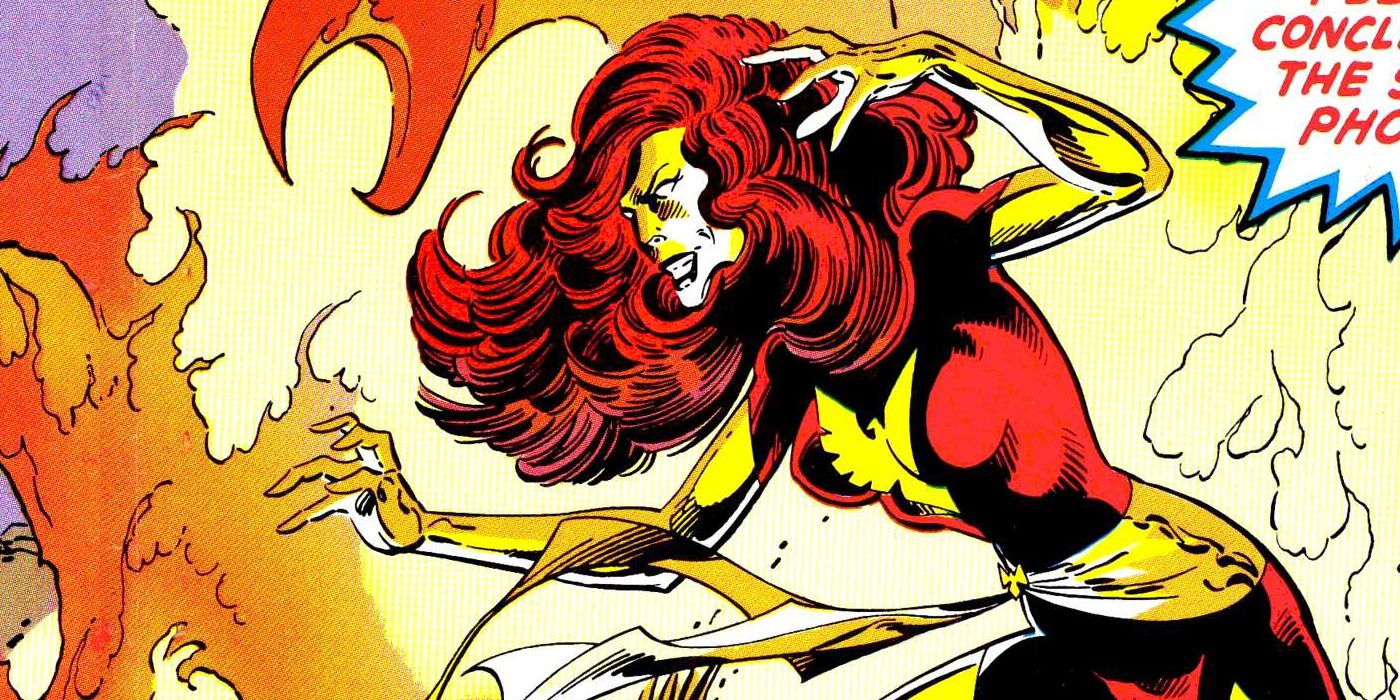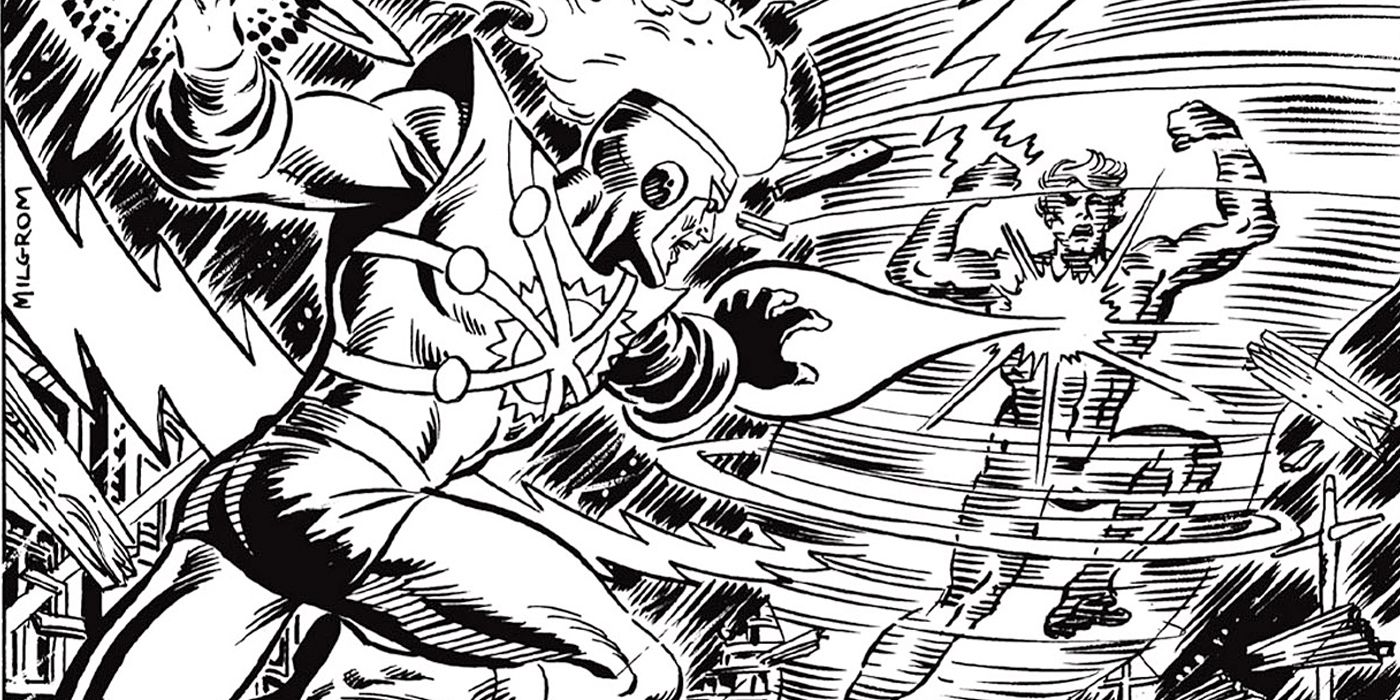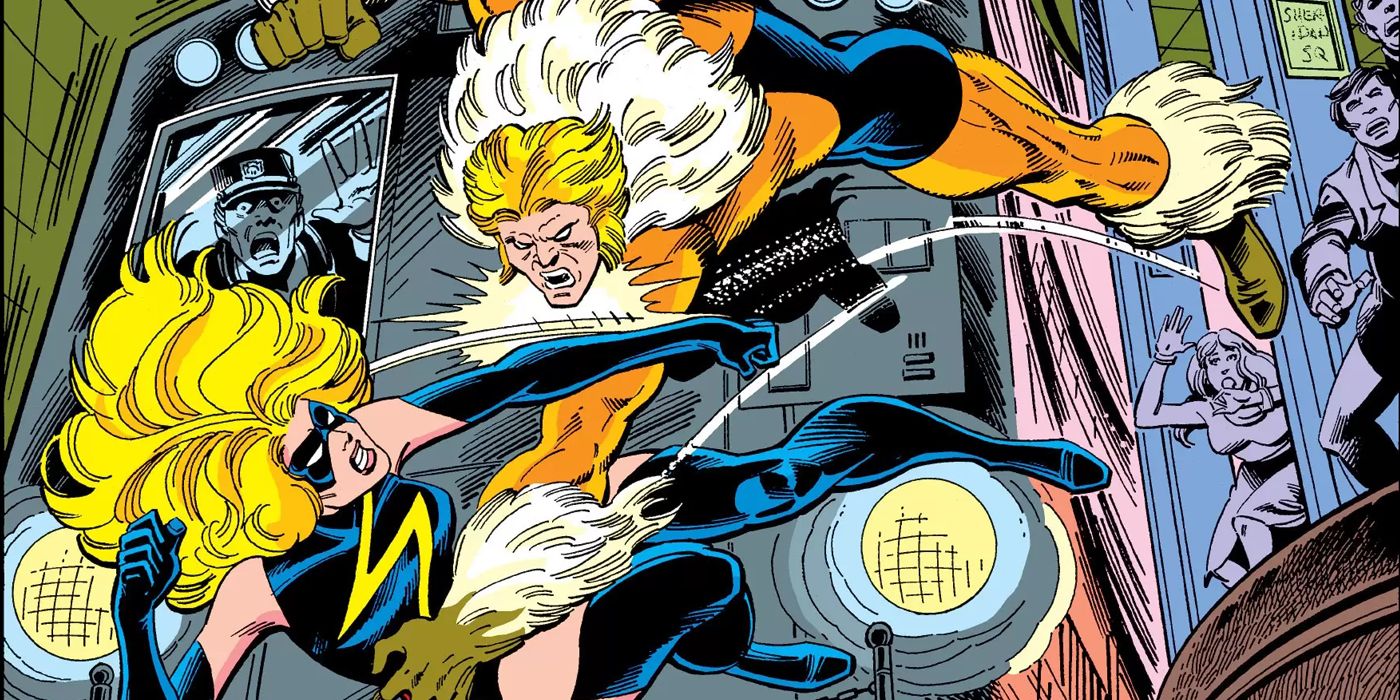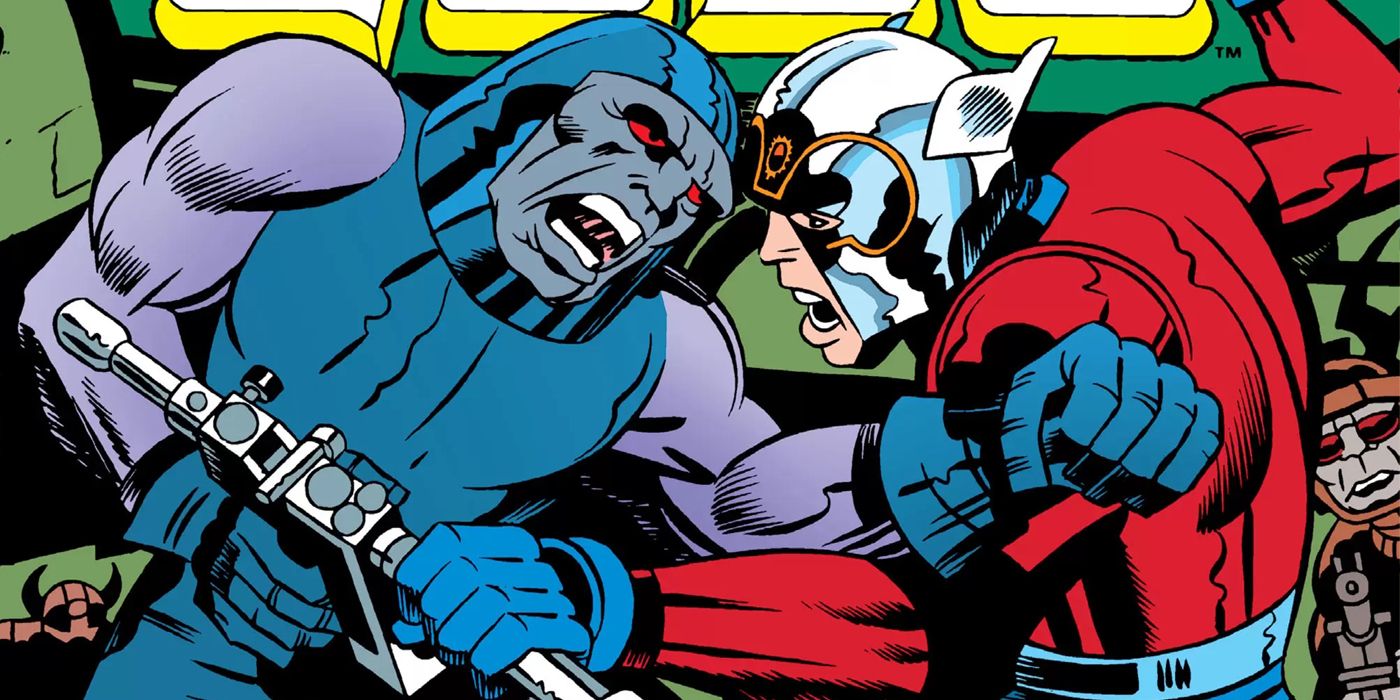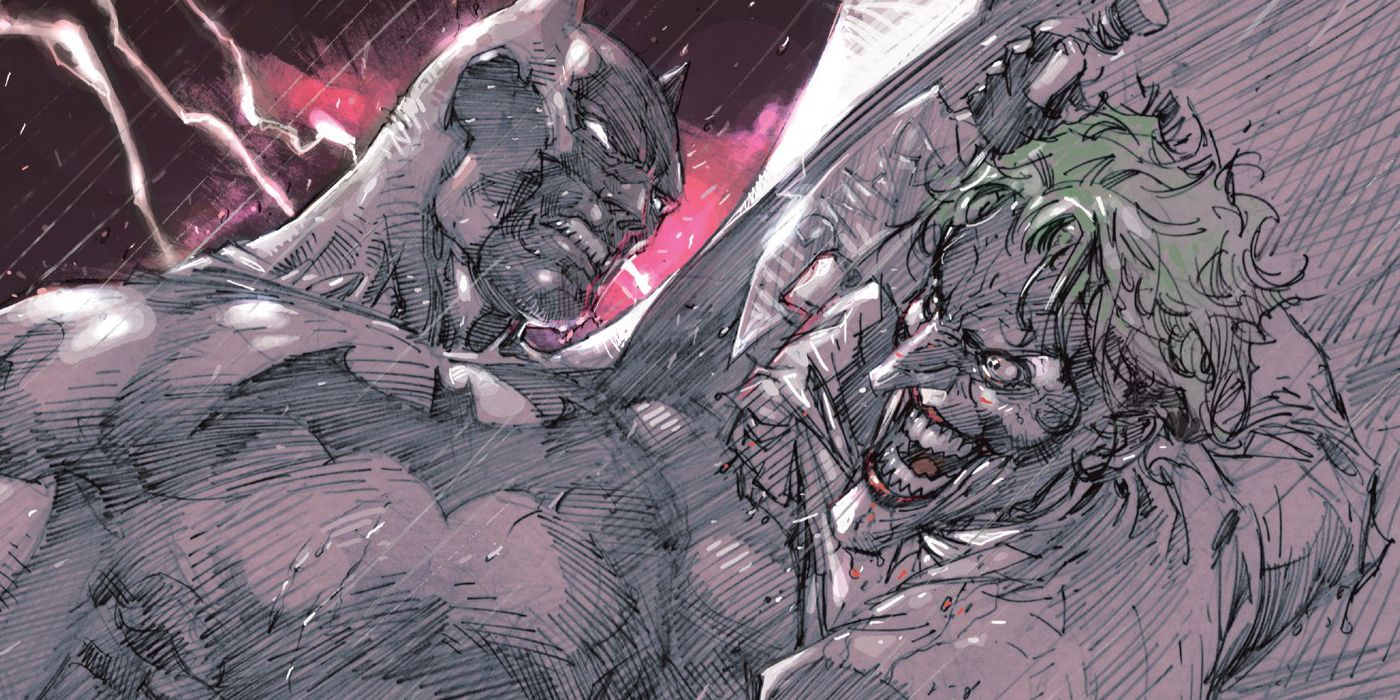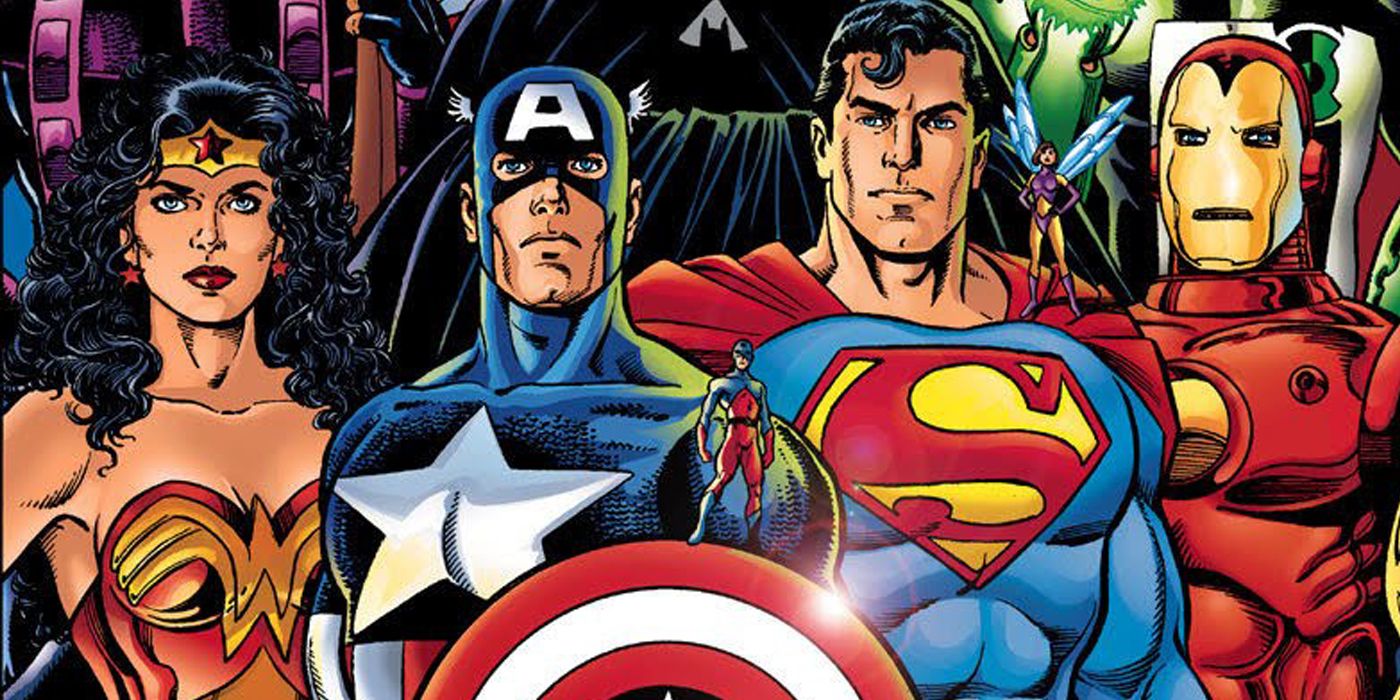Delays are an unfortunate reality of the comic book industry. Since upcoming issues have to be solicited so far in advance, even slight miscalculations can throw a creative team off of a book’s regular release schedule. Despite the ruinous effect that delays had on the comic industry of the 1990s, they remain a hallmark of even the highest profile titles.
RELATED: The (Un)Avenged: 15 Avengers You Forgot About
While most delays only last a few weeks, some can go on for decades as publishing objectives change and creative priorities shift. Now, CBR has put together a list of some legendary comics that were released after years in comic book limbo. For this list, which is in no particular order, we’ll be looking at comics that were completed or planned to some extent before being shelved and released or revisited in some manner years later.
15 The New Teen Titans: Games
In “The New Teen Titans,” Marv Wolfman and George Pérez turned the Teen Titans into one of the most prominent DC Comics of the 1980s. During their tenure on the title, the team of sidekicks aged into young adulthood as Dick Grayson became Nightwing and iconic characters like Deathstroke, Cyborg, Raven and Starfire were introduced. After that run ended and the duo rebooted the DC Universe in “Crisis on Infinite Earths,” they started planning their final Teen Titans tale. That idea became their second brief run on “The New Titans” and they subsequently started plotting the graphic novel, “The New Teen Titans: Games.”
The half-completed project stalled in 1988 after both Wolfman and Pérez felt creative burnout with the Titans and moved on to other projects. Despite a few attempts to revive “Games,” it sat idle until 2010, when the pair resumed working on the project for the New Teen Titans’ 30th anniversary. Having forgotten some of their original plot, they crafted a new story around the existing artwork, which featured some characters and costumes that hadn’t been seen in 20 years. In 2011, “The New Teen Titans: Games” was finally released to mostly positive reviews.
14 Ghost Rider Finale
Marvel Comics’ “Ghost Rider” was one of the biggest successes of the early 1990s. The title, which introduced Danny Ketch as the new Ghost Rider, even spawned the short-lived publishing imprint Midnight Sons. By 1998, the title was well past its commercial peak, and writer Ivan Velez Jr. and artist Javier Saltares had started to set up the end of the series. When the low-selling title started hemorrhaging even more readers, Marvel canceled the series with “Ghost Rider” #93, leaving it on a cliffhanger ending.
The creative team had already started working on the next issue, which would’ve resolved Danny Ketch’s story and served as a proper series finale. Instead, Ketch became an afterthought in the Marvel Universe while the finale’s script and artwork circled the Internet for years. In the run-up to Ghost Rider’s 2007 movie, Marvel finally released the “Ghost Rider Finale,” which printed “Ghost Rider” #94, complete with the trade dress of the late 1990s. After this long-awaited release, Ketch co-starred in Jason Aaron’s “Ghost Rider” run before spinning off into his own miniseries in 2008.
13 Genndy Tartakovsky's Cage!
After creating “Dexter’s Lab” and “Samurai Jack,” Genndy Tartakovsky was one of the biggest names in animation. With so many explicit references to super-hero comics in those shows, it was really only a matter of time before he made the transition from screen to page. In 2007, Marvel announced that Tartakovsky would be writing and penciling “CAGE!,” an out-of-continuity '70s-era Luke Cage miniseries.
As Tartakovsky said in 2015, he only agreed to work on the book when he had a clear schedule. While he finished the book’s pencils and some of the book’s inks, his work on his show “Sym-Biotic Titan” and films including making storyboards for “Iron Man 2” took precedence. After rediscovering his old artwork, he “refined” and completed work on the series. After almost a decade, Marvel started releasing the ongoing miniseries in 2016 to coincide with Netflix’s “Luke Cage” show and the Marvel Now! publishing initiative. Tartakovsky is revisiting another one of his old creations with a revival of “Samurai Jack,” set to air on Adult Swim’s Toonami programming block in 2017.
12 Elseworlds 80-Page Giant
Unlike the other books on this list, DC Comics technically released “Elseworlds 80-Page Giant” on time, before the publisher recalled and shredded all but a few copies of the book. In 1999, DC released the giant-size anthology of short alternate reality tales. One of those short stories was Kyle Baker and Liz Glass’ “Letitia Lerner, Superman’s Babysitter,” a comedic tale about Superman’s earliest days. When DC President Paul Levitz objected to a scene where a toddler Superman crawled into a microwave, DC recalled the book and shredded most of the print run.
A few thousand copies of the Elseworlds one-shot made it to England before the run was pulped and became highly sought-after collectibles. In 2000, the Letitia Lerner story won the Eisner, comic’s highest award, for Best Short Story and Baker won the Eisner for Best Writer/Artist: Humor, partially for that story. After the win, DC officially released the controversial tale in 2001 as part of “Bizarro Comics,” an anthology featuring indie comic creators. The rest of the Elseworlds title wouldn’t be fully released until 2011, when DC released “DC Comics Presents: Elseworlds 80-Page Giant” as part of a broader reprint program.
11 Fantastic Four: The Lost Adventure
Stan Lee and Jack Kirby defined the Marvel Universe in their legendary 102 issue run on “Fantastic Four.” In 1970, long-simmering tensions between Kirby and Marvel finally boiled over, and the King of Comics turned in his last two issues of “Fantastic Four” with his resignation letter. Lee put in dialogue for one of those issues, which became “Fantastic Four” #102, but the other issue wasn't "dialogable” as it was. After a few months, portions of that book were rearranged into a flashback sequence in 1971’s “Fantastic Four” #108, where they fought the Nega-Man in the Negative Zone.
In 2008, Marvel released an expanded version of the original story as “Fantastic Four: The Lost Adventure” with dialogue by Lee and embellishments on Kirby’s original artwork by Ron Frenz and Joe Sinnott. This version of the story featured Janus the Mega-Man as a bank robber and made no mention of the Negative Zone. Within the comic’s pages, Stan Lee apologized for the lack of action, admitting that he and Kirby were “just kinda coasting at the time.”
10 JLA: Kid Amazo
Graphic novels can be a bit of a hard sell in a market dominated by monthly super-hero titles. As CBR reported way back in 2004, “JLA: Kid Amazo” was supposed to be a graphic novel by Peter Milligan and Rob Haynes about Pete Halloran, the son of the android Amazo, one of the Justice League’s most powerful enemies.
After that solicitation was pulled, the graphic novel was reworked into an arc for DC’s “JLA: Classified,” an anthology series with a revolving door of top tier creators. Around the same time “Kid Amazo” was scheduled to be released, a story about the adult Amazo was published, which pushed the release of "Kid Amazo" back by a few more issues. The story finally saw print in 2007’s “JLA: Classified” #37-41. By the time it was finally released, Carlos D’Anda had taken over the art duties and the title character’s name had been changed to Frank Halloran. Despite the story’s long road, it offered an interesting take on an unusually dysfunctional Justice League that couldn’t decide how to deal with the possible threat posed by Kid Amazo.
9 Hellblazer: Shoot
For a time, working on “Hellblazer” seemed like a rite of passage for the biggest British comics writer of the moment. After Garth Ennis and Paul Jenkins had guided John Constantine’s adventures for years, Warren Ellis began what was supposed to be a lengthy run on the long-running Vertigo title. After just 10 issues in 1999, Ellis walked away from the book when Vertigo’s parent company DC Comics rejected his controversial school-shooting story, “Shoot.” In the wake of the Columbine massacre, Paul Levitz and the executives at DC didn’t want to release the comic, which had been completed before the tragedy, without major changes.
After refusing to change his thought-provoking story, Ellis walked away from “Hellblazer” in protest. In 2000, CBR reported that the complete issue, featuring Phil Jimenez’s inked artwork, was leaked online. After a decade, the story finally appeared in its full form in 2010’s “Vertigo Resurrected: Shoot,” where it was featured along with several other hard-to-to-find short stories.
8 From the Marvel Vault
Marvel has never been shy about making inventory stories, comics that were completed and set aside until they were needed to fill a publishing gap or cover for a late issue. While these kinds of stories were regularly used in anthology series like “Marvel Fanfare,” two issues featuring unseen work by some of Marvel’s founding fathers weren’t released until decades later, as part of 2011’s “From the Marvel Vault.”
“The Incredible Hulk and Human Torch: From the Marvel Vault” featured 25 year-old artwork by Spider-Man co-creator Steve Ditko that had originally been created for an issue of “Marvel Team-Up.” “Gambit: From the Marvel Vault” featured a team-up between Gambit and the Champions penciled by the late George Tuska, who had worked in comics since the 1930s. The other comics in this effort were issues of “Doctor Strange,” “Thunderbolts” and “Defenders” that had been completed as possible fill-ins for series in the late 1990s. While artwork for all of the aforementioned issues was complete, some of the plots had to be reconstituted from the artwork or re-dialogued for modern sensibilities.
7 Teen Titans Lost Annual
Despite its somewhat misleading title, the “Teen Titans Lost Annual” only started life a few years before it was published. In 2008, the story was conceived as “Teen Titans Swingin’ Elseworlds Special,” a ‘60s-era story by the Titans’ original co-creator Bob Haney, with art by Jay Stephens and Mike Allred and a cover by classic “Teen Titans” artist Nick Cardy. After being completed, the project sat unpublished for years, even after Haney’s death in 2004.
In 2008, the “Teen Titans Lost Annual” was finally published to coincide with the new miniseries, “Teen Titans: Year One.” The book served as a welcome reminder of the zaniness of DC’s Silver Age comics. In the story, the classic Titans discovered that President John F. Kennedy had been replaced by an android and kidnapped by an alien race called the Ullustrians to help lead their people against the evil Violators. After defeating the evil aliens, the Titans and Kennedy learned that the Kennedy android had been assassinated. In order to keep the existence of the aliens secret, the real Kennedy chose to remain in space with the Ullustrians in a truly bizarre ending.
6 Phoenix: The Untold Story
One of the most famous stories in Marvel Comics’ history originally had a very different ending. Chris Claremont and John Byrne’s landmark X-Men story, “The Dark Phoenix Saga,” originally ended with Dark Phoenix turned into a depowered Jean Grey and released into the custody of the X-Men. Marvel Editor-in-Chief Jim Shooter noticed that Dark Phoenix had committed genocide on a galactic scale and felt that the character needed to be held accountable for her actions.
Claremont balked at Shooter’s suggestion that Jean be imprisoned by the alien race, the Shi’ar, claiming that the X-Men would continually try to rescue their friend. A frustrated Claremont joked that they should just kill Jean off, and Shooter called his bluff. Despite the creative team’s initial objections, the Dark Phoenix killed herself at the conclusion of that famous 1980 story. In 1984, Marvel released “Phoenix: The Untold Story,” which featured the original ending where Jean Grey was simply depowered. Shortly after this story, the real Jean Grey returned and was absolved of the Dark Phoenix’s sins, since the Phoenix had taken her form and put her in stasis at the bottom of Jamaica Bay.
5 Cancelled Comics Cavalcade
After an aggressive marketing campaign failed, DC Comics imploded in 1978, suddenly canceling more than two dozen titles. With so many upcoming issues fully or partially completed, some DC staffers created photo-copied compendiums of issues that would likely never be published. The two issues of “Cancelled Comics Cavalcade” were distributed around the office and sent to both the Overstreet Price Guide and the U.S. Copyright Office to establish their existence. While never technically sold, these black-and-white books became highly sought-after collector’s items.
After being extensively bootlegged through the fan community, several of these stories saw print. Some appeared relatively quickly after their cancellation. A cancelled story with the sorceress Madame Xanadu appeared in 1979’s “The Unexpected” #190, while other stories appeared in various titles throughout the early 1980s. In the 2010s, several more issues were officially released as robust reprint programs collected unreleased issues of titles like “Firestorm” and “The Creeper,” along with the rest of those respective series. As of this writing, about half of the issues featured in “Canceled Comics Cavalcade,” including the first issue of an aborted Vixen series, have not yet been officially released.
4 Ms. Marvel #24-25
As Captain Marvel, Carol Danvers is one of Marvel’s most visible characters, especially with her scheduled 2019 film debut. In the 1970s, the character wasn’t nearly as popular, and her series “Ms. Marvel” was canceled in the middle of a story that would’ve introduced one of Marvel’s most famous characters. Longtime X-Men writer Chris Claremont had already introduced Mystique in the pages of “Ms. Marvel” and was getting ready to introduce her allies Destiny, Pyro, Avalanche and Rogue when the series was suddenly canceled with “Ms. Marvel” #23.
With what would’ve been the next two issues of “Ms. Marvel” partially completed, Claremont continued these stories as background for 1981’s “Avengers Annual” #10 and his other work. Originally meant for inclusion in the ‘80s anthology “Marvel Fanfare,” these stories, which included Rogue’s permanent absorption of Ms. Marvel’s powers, remained unpublished until 1992. Claremont and Mike Vosburg’s completed “Ms. Marvel” #24, which included a fight between Ms. Marvel and Sabretooth, was included in “Marvel Super-Heroes” #10. That team’s “Ms. Marvel” #25 was finished by Simon Furman and Mike Gustovich and appeared in “Marvel Super-Heroes” #11, which finally showed the set-up for the decade-old annual.
3 Jack Kirby's New Gods
After Jack Kirby left Marvel in 1970, he migrated over to DC Comics, where he launched his landmark “Fourth World” saga across a series of titles he wrote and drew. By 1972, in “New Gods,” the heart of the larger story was “suspended” due to low sales long before its completion. Kirby moved on to other titles and eventually away from the company.
In the 1980s, DC executives Paul Levitz and Jenette Kahn saw the potential in the title and included several of the New Gods like Darkseid and Orion in the “Super Powers” toyline. DC also reprinted “New Gods” and asked him to finish his story at the end of that reprint series and in the 1985 graphic novel, “The Hunger Dogs.” After a troubled development process and a rejected ending involving the death of the New Gods, several existing pages were reformatted for use in “The Hunger Dogs,” which climaxed with the despot Darkseid losing control of his planet in a slave revolt. In spite of Kirby’s original intentions, Darkseid, Orion and the rest of the New Gods survived and continue to appear as major players in the DC Universe to this day.
2 Batman: Europa
In the wake of superstar artist Jim Lee’s stellar work on 2002’s blockbuster “Batman” story “Hush,” Lee couldn’t come back to the Dark Knight fast enough. After his 2004 run on “Superman,” DC Comics announced the miniseries “Batman: Europa.” Inspired by Lee’s time in Italy, the globe-trotting series was set to be written by Brian Azzarello and Matteo Casali with fully-painted art by Lee and Giuseppe Camuncoli, among others.
As Lee’s attention shifted to illustrating Frank Miller’s infamous 2005 series “All-Star Batman and Robin, the Boy Wonder,” “Europa” fell firmly on the back-burner and the book’s other announced artists, like Gabriele Dell’Otto and Jock, dropped out. After briefly being teased in 2010, “Batman: Europa” was finally released in November 2015. The first issue featured Lee’s pencils and inks over Camuncoli’s layouts, while the rest of the series was illustrated by Camuncoli, Diego Patorre and Gerard Parel. In the decade between the project’s announcement and completion, Lee rose from penciller to DC Comics Co-Publisher and redesigned costumes for most of the DC Universe for the New 52 reboot.
1 Justice League/Avengers
For decades, a crossover between the Avengers and the Justice League of America was one of the most anticipated events in all of comics. In 1979, Gerry Conway, Roy Thomas and George Pérez began working on a crossover that would see Marvel and DC Comics’ most prominent super-teams meet in a time-travel tale where they would fight Marvel’s Kang and DC’s Lord of Time. By 1983, Pérez had finished drawing 21 pages of the book before editorial disputes between DC and Marvel caused the project’s cancellation.
By the 1990s, tensions between Marvel and DC had cooled somewhat, and the publishers successfully worked together on other crossovers, like 1996’s “Marvel Vs. DC.” In 2002, the two companies agreed to publish a new version of “JLA/Avengers,” written by Kurt Busiek and illustrated by Pérez. In 2003, the four-issue miniseries was released, featuring every member of both teams and hallmarks of both universes. Pérez’s work for the original crossover was included in a collected edition of the series, which is generally regarded as the greatest Marvel/DC crossover ever published.
Do you have a favorite long-delayed comic? Let us know in the comments!

